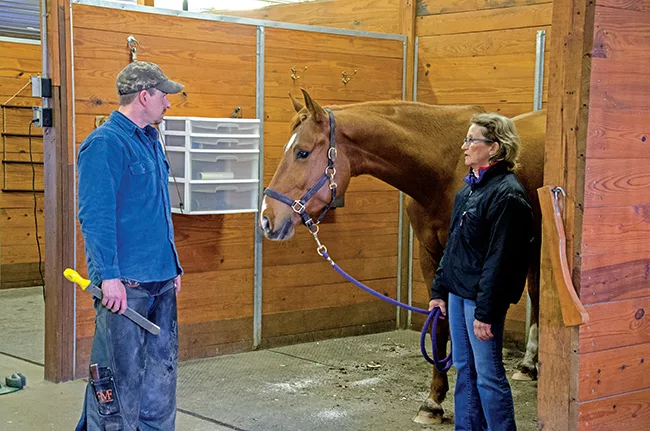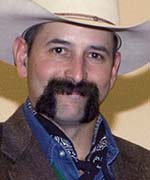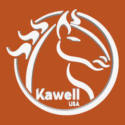As farriers, we are self-employed in a service industry. You will realize that there are many things that the self-employed have to resolve.
Early in a farrier practice, a common mistake is to do more for less dollars in order to achieve the business goals that you have set for yourself. Starvation is an incredible incentive driving the young farrier to go along with things from horses and customers that the “ol’ salt” would never dream of allowing.
With success comes different decisions about how to run a business. In a successful practice, that means you become more judicious in the clients you keep.
Analyze The Business Relationship
In every relationship, there are layers and rules that apply to those levels. Most relationships that don’t involve money require respect and mutual appreciation if it is healthy and beneficial to all parties. But when money enters the picture, a business relationship has been established.
This relationship is defined by one party who provides a service or product another party deems valuable enough to pay for. As a farrier, your goal should be to provide a service superior enough that a horse owner will find, hire, retain and pay you more than other farriers because you have proven your service is worth more. Granted, this is sometimes a customer perception and not reality, but that is still a valid and valuable situation for the parties involved.
Over time, the relationship will evolve so everyone remains happy. Or if not necessarily happy, at least satisfied enough that they are willing to maintain the business relationship. As they mature, farriers generally increase their prices as business volume and operational costs both increase.
Skills increase from attending clinics, contests, certifications and conventions, which all add to the cost of running the business. As your skills increase, the quality of the customer and horses serviced tends to also increase, which may lead to a point where initial customers have become more trouble than they are worth.
Sometimes it’s the horses, sometimes it’s the drive, sometimes it’s the people and sometimes it is just the way we feel that day. These feelings usually should indicate that the particular business relationship with that client did not evolve to a point where it became mutually beneficial.
If those feelings aren’t isolated to particular clients and occur every day, then it is possible that farriery is not your calling and you would be happier in a different profession. When those feelings are linked to a certain customer or set of horses, then it is time to modify that particular relationship.
Dollars And Cents
From a purely simplistic economic view, you have to look at opportunity cost. This is a basic principle of microeconomics that means you have forgone one thing to do another, and the thing you have foregone is the “cost” of doing the thing you chose.
For instance, if reading this article to improve your business takes about as long as trimming one horse, then the cost of reading it is based on your one horse trim price. Generally what is learned from studying will lead to a better business, which makes the cost worth it.
My wife Kelly and I always talk about things we want to do or buy in terms of how many trims or shoeings the item is worth.
When you look at the economic merits of a customer, examine the opportunity cost. Take a scenario in which horse owner Mr. Smith pays you $100 per horse, but Mr. Jones is willing to pay $200 per horse. Assuming your expenses (materials, fuels costs, etc.) are equal per horse, the clear economic decision is that your time is better invested working for Mr. Jones.
You then drop Mr. Smith so you have time to shoe for Mr. Jones. That is until you reach a point in your business where your time is more valuable than money. At that point, the other benefits of Mr. Smith’s horses, barn, social status or other factors come into play. The intangibles will influence your decision — there are things money can’t buy.
Dismissal Strategy: Raise Your Rates
When you reach the point in which the cost of doing business with someone outweighs the benefits, it is time to get out of that relationship. In the cases where I persevered against my better judgment and inner voice, I often became the one that was fired. Whether that was inevitable or just the result of lesser service on my part, I’ll never know.
Many years ago, Kelly and I had an account that required us to be there 2 days a week. This client placed pressure on us in ways that a customer with two horses couldn’t — and they knew it.
As we left at the end of one particularly long day, I told Kelly that we needed to fire this customer. I’d had it with the horses and had it with what I perceived as unreasonable demands and expectations of the customer.
Kelly convinced me to continue to stay the course. For context, it is important to note that my wife does the books, and I am happily and completely in the dark about our finances. She rarely tells me I have a few dollars to spend, but more often she tells me to quit spending.
Within two more visits, the customer informed us that we were no longer needed. Similar to being dumped by the boyfriend or girlfriend you were going to dump, it really galls you to be beaten to the punch.
As a result of that experience, and several that are almost identical, I now follow my instinct and get out of the situation on my own terms.
I never directly say “no” to a customer. Rather, I say it with money. If I feel that I want to get rid of a certain client, I raise the service rate to such an extent that they either say “no thanks,” or they pay me enough that I determine they are worth retaining as clients. “Charge them until you like them” is another way to put it.
The big benefit here is that it is a winning situation for you. The main word of rejection in the English language is “no.” It doesn’t leave any room for discussion. “Maybe” isn’t implied when you hear “no.” The strategy of charging more can end the relationship without the negative implications of rejection.
However, if I tell a customer, “Sure I’ll shoe those horses, but my rates have gone up $50 per horse.” If they continue to retain my services, I have gone up over $50 per hour and my opportunity cost has been more than realized. If they say no, then the result is what I was after in the first place, and they did not have to feel rejected.
This means they may reach a point where they are willing to pay that extra $50 and I have not shut the door like the word “no” would have done.
If bad horses are where you draw the line, you can still use pricing to say no. Charge your shoeing rate, add hazard pay and insist on a vet to administer some liquid trainer.
You have to make a living, but you also have to be able to live with what you are doing to make that living. When you feel like you’ve reached a point where the business relationship with a particular customer is not mutually beneficial, make a list of the pros and cons. Then determine whether you are going to stay.
If you end the relationship, don’t permanently close the door and treat the customer properly. After all, there was a time when they were good enough for you to shoe for — you may find yourself there again.








